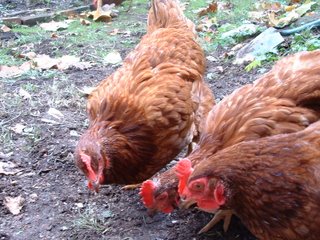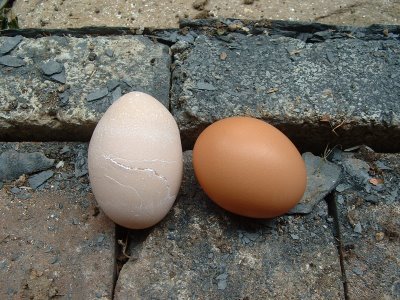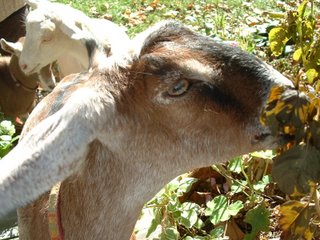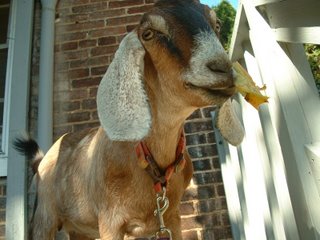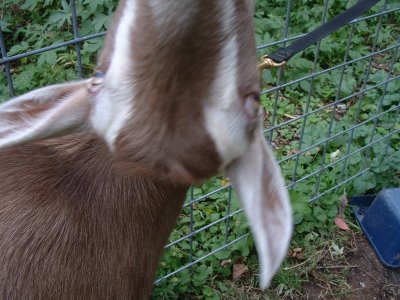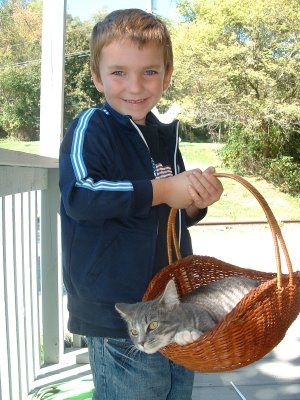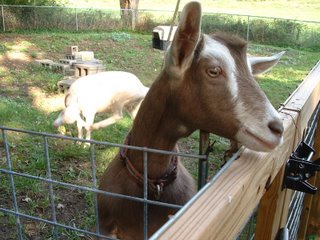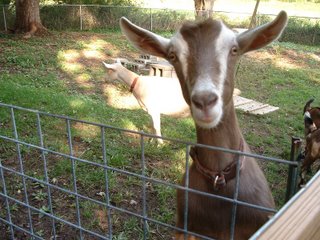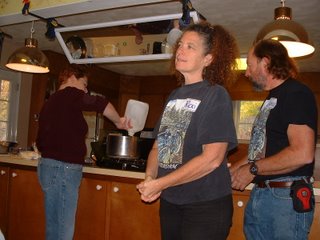

I was so happy to finally get to take a cheesemaking class with the Cheese Queen herself,
Ricki Carroll! It was the perfect 40th birthday gift to myself. This class was one of the final field days of the year offered by
PASA - Pennsylvania Association for Sustainable Agriculture - of which I am a member. John attended with me, and I was pleased that he seemed to have a good time during the course of the day.
Ricki is a smart, funny, and warm woman who seems to genuinely enjoy teaching others the art of cheesemaking, and sharing stories of her experiences with other cheesemakers from around the world. We started the class with a farmhouse cheddar, then a queso blanco, a ricotta, then a mozzarella. During lunch, which was provided by PASA and Ricki, we ate many different cheeses along with other fresh local foods. Lunch was beautiful and delicious!

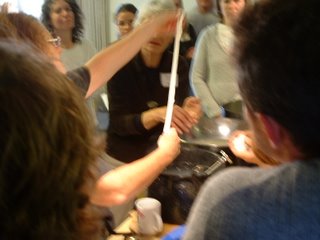
Here Ricki demonstrates the stretching of the curd in making mozzarella.
The following pictures are showing the steps to making the farmhouse cheddar. This is a hard cheese that requires a cheese press.

After the heating of the cow's milk (provided by Perrydell Farms of Leaders Heights, PA), you add a starter culture; then after a bit you add rennet; then allow the curd to form. Now cut the curd to allow further separation of the whey.


Ladle the curds into a cheesecloth-lined colander, tie the four corners and hang to drain. After about an hour you can break up the curds with your fingers, salt it, then pack the curds into the cheesecloth-lined cheese mold and put it in a cheese press.
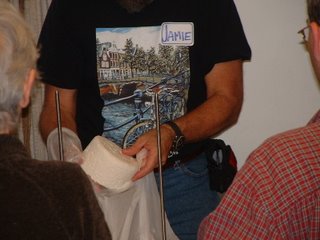
This is how the cheese looked after it spent about 45 minutes in the press.
This is as far as we could get with the cheddar during the course of our 6-hour class. The first six lucky folks who bought a cheese press ($239) could take home the cheddar that we made in class to finish it off (press for 12 hours, let it air dry for 3-5 days, wax the cheese, then age it for at least two months) at home. If they are lucky - it will be good enough to eat!
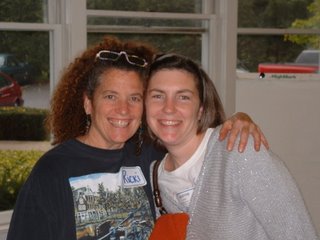
Thanks, Ricki!











